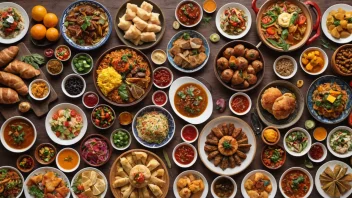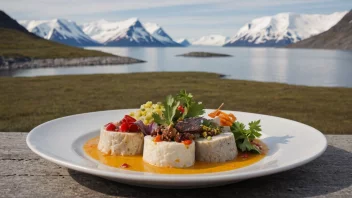Italy is known for its rich cultural heritage, and its culinary traditions are a significant part of this tapestry. Each region boasts unique flavors, ingredients, and cooking techniques that reflect local history, geography, and cultural influences. This article aims to answer some common questions about the culinary traditions found across Italy's diverse regions, helping travelers and food enthusiasts alike to appreciate the country's gastronomic landscape.
What are the key regions of Italian cuisine?
Italy's cuisine is often categorized into several key regions, each with its distinctive characteristics:
- North Italy: Known for rich, creamy sauces and hearty dishes like risotto and polenta.
- Central Italy: Famous for its use of olive oil, fresh vegetables, and regional pasta dishes.
- Southern Italy: Characterized by its vibrant flavors, seafood, and the iconic Neapolitan pizza.
- Sicily: Offers a unique combination of Mediterranean influences, with a focus on sweets and street food.
What are some must-try dishes in Italy?
When visiting Italy, there are several iconic dishes that you simply must try:
- Pasta: From spaghetti carbonara in Rome to pappardelle al cinghiale in Tuscany, pasta is a staple.
- Pizza: Authentic Neapolitan pizza with its thin crust and fresh toppings is a must.
- Risotto: Particularly famous in northern regions, try Risotto alla Milanese for a taste of saffron-infused rice.
- Tiramisu: A beloved dessert made with coffee-soaked ladyfingers and mascarpone cheese.
How does regionalism influence Italian cuisine?
Regionalism plays a significant role in Italian cooking. Each region utilizes locally sourced ingredients, leading to variations in recipes and culinary styles. For instance:
- In the Emilia-Romagna region, you'll find rich Bolognese sauce made from local meats and tomatoes.
- In Liguria, pesto is a celebrated sauce, made with fresh basil and pine nuts from the region.
- Calabria is known for its spicy cuisine, often featuring chili peppers and locally cured meats.
What is the significance of wine in Italian culinary traditions?
Wine is deeply embedded in Italian culture and cuisine. Each region produces its own wines which are often paired with local dishes. For example:
- Tuscany is famous for Chianti, which complements the region's hearty meat dishes.
- Veneto is known for Prosecco, a sparkling wine that pairs well with seafood and appetizers.
- In Sicily, Nero d'Avola is a robust red wine that enhances the flavors of local pasta dishes.
What unique culinary experiences can travelers enjoy in Italy?
Italy offers various unique culinary experiences that allow travelers to dive deeper into its food culture:
- Cooking Classes: Many regions offer hands-on cooking classes where you can learn to make traditional dishes.
- Food Tours: Guided food tours in cities like Bologna or Florence help you discover local specialties and hidden gems.
- Wine Tastings: Visiting vineyards in regions like Tuscany or Piedmont provides insight into winemaking and tasting techniques.
How can travelers navigate dietary restrictions while enjoying Italian cuisine?
Italy is generally accommodating to various dietary restrictions. Here are some tips:
- Vegetarian/Vegan: Many pasta dishes can be made without meat, and restaurants often offer vegetarian options.
- Gluten-Free: Look for restaurants that provide gluten-free pasta and bread, especially in larger cities.
- Allergies: Always inform your waiter about any allergies to ensure your meal is prepared safely.
In conclusion, Italy's culinary traditions are as diverse as its regions, each offering unique flavors and experiences. From savoring authentic pizza in Naples to indulging in rich risottos in Milan, every bite tells a story. Whether you are a seasoned foodie or a curious traveler, Italy’s food scene is sure to delight and inspire you on your journey.






